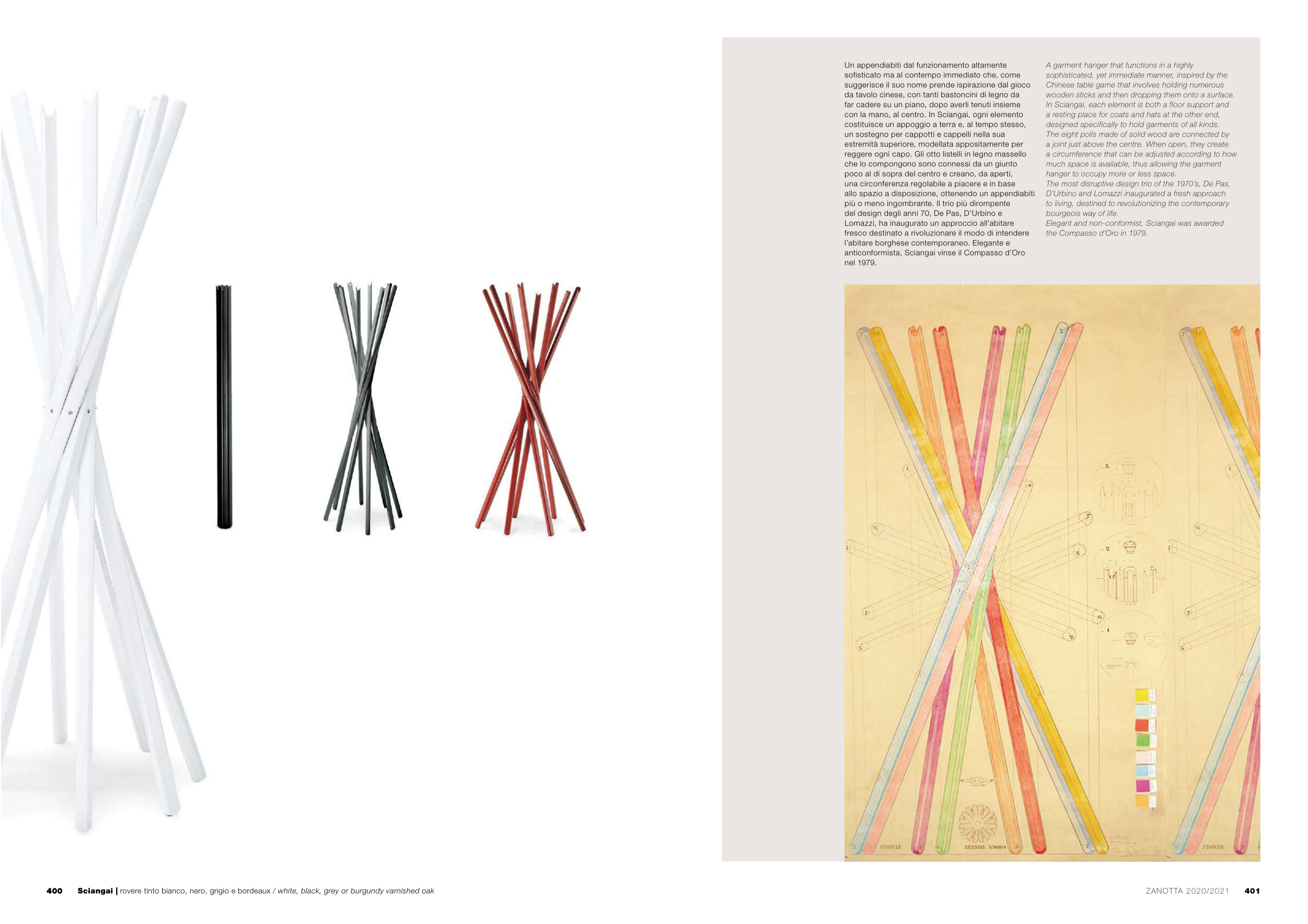Un appendiabiti dal funzionamento altamente
sofisticato ma al contempo immediato che, come
suggerisce il suo nome prende ispirazione dal gioco
da tavolo cinese, con tanti bastoncini di legno da
far cadere su un piano, dopo averli tenuti insieme
con la mano, al centro. In Sciangai, ogni elemento
costituisce un appoggio a terra e, al tempo stesso,
un sostegno per cappotti e cappelli nella sua
estremità superiore, modellata appositamente per
reggere ogni capo. Gli otto listelli in legno massello
che lo compongono sono connessi da un giunto
poco al di sopra del centro e creano, da aperti,
una circonferenza regolabile a piacere e in base
allo spazio a disposizione, ottenendo un appendiabiti
più o meno ingombrante. Il trio più dirompente
del design degli anni 70, De Pas, D’Urbino e
Lomazzi, ha inaugurato un approccio all’abitare
fresco destinato a rivoluzionare il modo di intendere
l’abitare borghese contemporaneo. Elegante e
anticonformista, Sciangai vinse il Compasso d’Oro
nel 1979.
A garment hanger that functions in a highly
sophisticated, yet immediate manner, inspired by the
Chinese table game that involves holding numerous
wooden sticks and then dropping them onto a surface.
In Sciangai, each element is both a floor support and
a resting place for coats and hats at the other end,
designed specifically to hold garments of all kinds.
The eight polls made of solid wood are connected by
a joint just above the centre. When open, they create
a circumference that can be adjusted according to how
much space is available, thus allowing the garment
hanger to occupy more or less space.
The most disruptive design trio of the 1970’s, De Pas,
D’Urbino and Lomazzi inaugurated a fresh approach
to living, destined to revolutionizing the contemporary
bourgeois way of life.
Elegant and non-conformist, Sciangai was awarded
the Compasso d’Oro in 1979.
401
ZANOTTA 2020/2021
400
400
Sciangai | rovere tinto bianco, nero, grigio e bordeaux / white, black, grey or burgundy varnished oak


